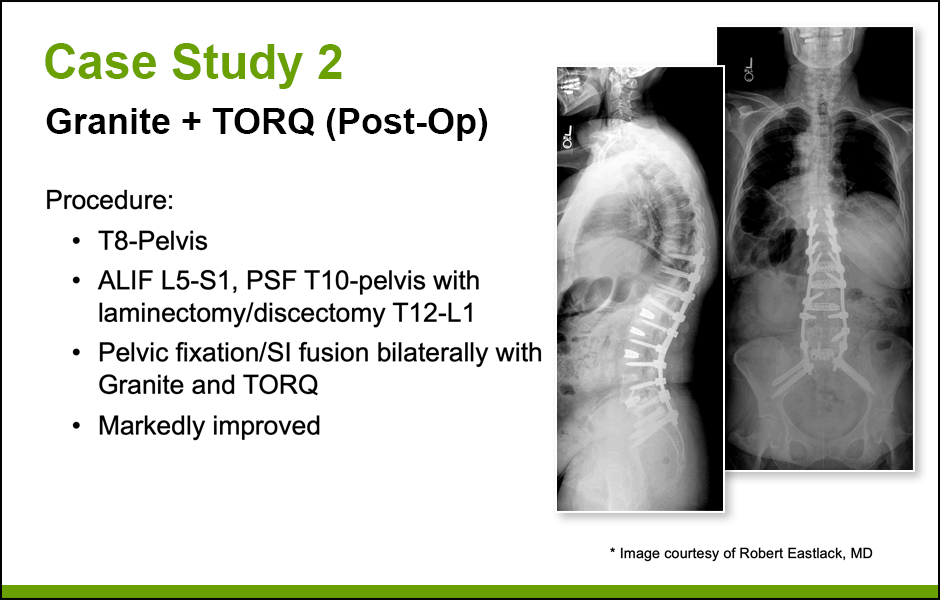iFuse Bedrock Surgical Technique
Watch
iFuse Bedrock®
Are you building a strong foundation? Learn about the iFuse Bedrock procedure intended to fuse the SI joint in long construct cases.
Learn about the biomechanical advantages of adding iFuse Bedrock to SAI pelvic fixation

Juan Uribe, MD
Juan Uribe, MD is Chief of the Division of Spinal Disorders, Volker Sonntag Chair of Spine Research, and Vice Chairman of Neurosurgery at Barrow Neurological Institute in Phoenix, AZ
Consultant of SI-BONE, Inc.
Bedrock Case Studies




The iFuse Bedrock Granite® Implant System is intended for sacroiliac joint fusion for the following conditions:
•Sacroiliac joint dysfunction that is a direct result of sacroiliac joint disruption and degenerative sacroiliitis. This includes conditions whose symptoms began during pregnancy or in the peripartum period and have persisted postpartum for more than 6 months.
•To augment immobilization and stabilization of the sacroiliac joint in skeletally mature patients undergoing sacropelvic fixation as part of a lumbar or thoracolumbar fusion.
•Acute, non-acute, and non-traumatic fractures involving the sacroiliac joint.
When connected to compatible pedicle screw systems with 5.5- or 6.0-mm posterior rods made from either titanium alloy or cobalt chore alloy the iFuse Bedrock Granite Implant System is intended to provide immobilization and stabilization of spinal segments in skeletally mature patients as an adjunct to thoracolumbosacral fusion for the following acute and chronic instabilities or deformities of the thoracic, lumbar, and sacral spine:
•Degenerative disc disease (DDD) as defined by back pain of discogenic origin with degeneration of the disc confirmed by patient history and radiographic studies
•Spondylolisthesis
•Trauma (i.e., fracture or dislocation)
•Spinal stenosis
•Deformities or curvatures (i.e., scoliosis, kyphosis, and/or lordosis)
•Spinal tumor
•Pseudarthrosis
•Failed previous fusion
Please refer to the additional information section in the Instructions for Use on compatible pedicle screw system rods.
The iFuse Bedrock Granite Navigation instruments are intended to be used with the iFuse Bedrock Granite Implant System to assist the surgeon in precisely locating anatomical structures in iFuse Bedrock Granite Implant System procedures, in which the use of stereotactic surgery may be appropriate, and where reference to a rigid anatomical structure, such as the pelvis or vertebra, can be identified relative to the acquired image (CT, MR, 2D fluoroscopic image or 3D fluoroscopic image reconstruction) and/or an image data based model of the anatomy. iFuse Bedrock Granite Navigation instruments are intended to be used with the Medtronic® StealthStation® System.
Healthcare professionals should refer to the Instructions For Use for indications, contraindications, warnings, and precautions at www.si-bone.com/label.
There are potential risks associated with the iFuse TORQ Implant System. It may not be appropriate for all patients and all patients may not benefit. For information about the risks, visit www.si-bone.com/risks.
NEXT




